5 ways of using corpora to develop learner autonomy
In a previous blogpost “Making the shift: teacher as knowledge owner’ to ‘teacher as facilitator’”, I made references to using a corpus with a student and how we could promote learner autonomy through guiding our students to make use of corpora and concordancing software.
This sparked a discussion in the Business English Teachers’ Facebook group, which in turn prompted me to promise a blogpost outlining some of my favourite ways of using corpora with students and teacher trainees.
The use of corpora can not only shed light upon how a word is really used in practice, it can also provide valuable practice in helping in students and trainees spot linguistic patterns and be the source of useful and enjoyable classroom activities.
In this blogpost, I will first outline five ways of giving learners practice in spotting linguistic patterns through the use of a corpus, thus giving them a means to explore a word/phrase without constantly having to ask a teacher.
In my next blogpost, I shall look at five more ways of using the corpus to create classroom activities that help raise awareness of word partnerships and the company that words keep.
But first of all, what is a corpus (plural: corpora)?
A corpus is a collection of texts or utterances (made easier with the advent of the computer and electronic databases), assembled for the purpose of studying linguistic structures and patterns. Current corpora can store millions of words. The linguistic features of the texts can be analysed by a concordancing software. A concordancer can, for example, show the frequency of the occurrence of words and/or their collocates.
Some online corpora come with their own concordancing software, thus making it easier for the user. Some, however, require you to process it through your own concordancers. In such cases, one could invest in a good concordancing software like Wordsmith. Alternatively, there are also freeware concordance programmes like those on Laurence Anthony’s website.
For the purpose of this blogpost, I’m going to reference Brigham Young University’s corpus of global web-based English, which makes use of the British National Corpus, is free and easy to access (although frequent use would require you to register and set up an account, all of which is free of charge), and comes with their own concordancing software.
Imagine a learner coming across the newspaper headline:
‘Government to boost economy’.
Knowing every word in that headline apart from the word ‘boost’, the learner proceeds to guess its meaning with some help from the news story.
But how can the learner find out more about this word.
He/She could of course look it up in the dictionary, which would tell him/her that ‘boost’ could mean ‘to lift’, ‘to raise’ or ‘to increase’. It might even give the learner a couple of examples, like ‘to boost prices’ and ‘to boost the horsepower of the car’ (courtesy of dictionary.com).
The learner now goes away knowing a little more about the word ‘boost’. But would he/she feel confident enough to produce it in a sentence?
Could the learner, for example, say ‘I must boost my hand when I ask a question in class’, or ‘Her pocket money boosted when she reached 12’, or even ‘I want to boost my English vocabulary’?
How could the learner know whether those are sentences that are commonly used or not, without always seeking the help of an English teacher?
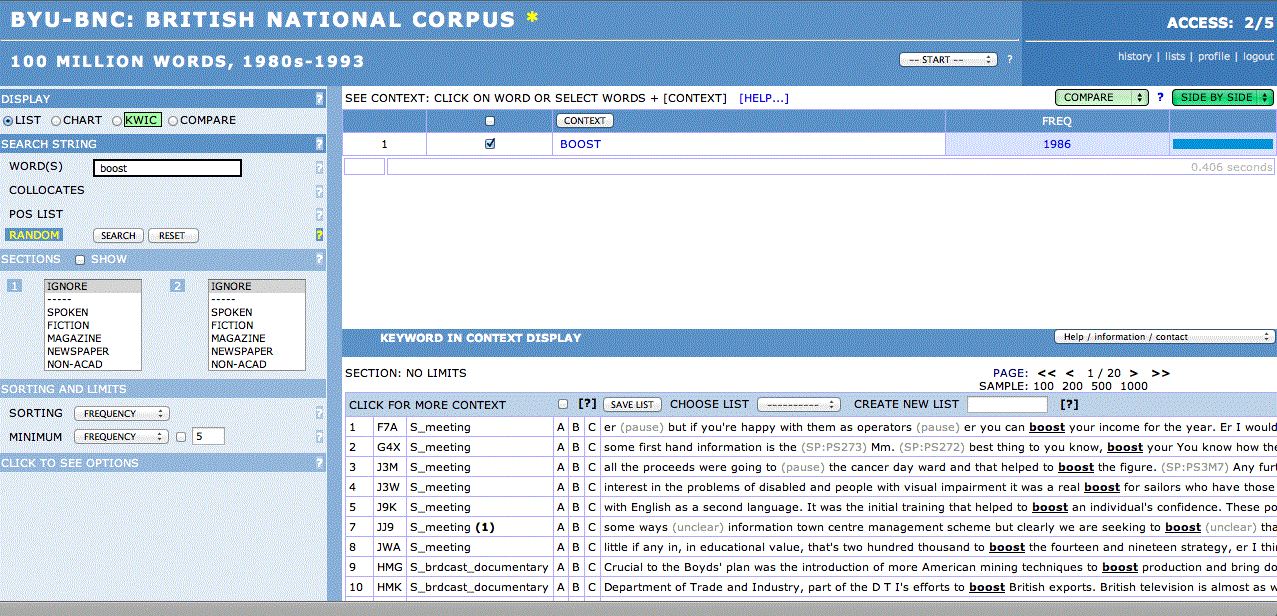
Using the BYU-BNC website, I get my learners to type in ‘boost’ in the ‘word’ box on the left of the screen.
When the word ‘boost’ appears on the right, I tick the box beside it, and click on ‘context’ right above.
1. Have students look at the example sentences and decide on the part of speech of a word and the grammatical patterns.
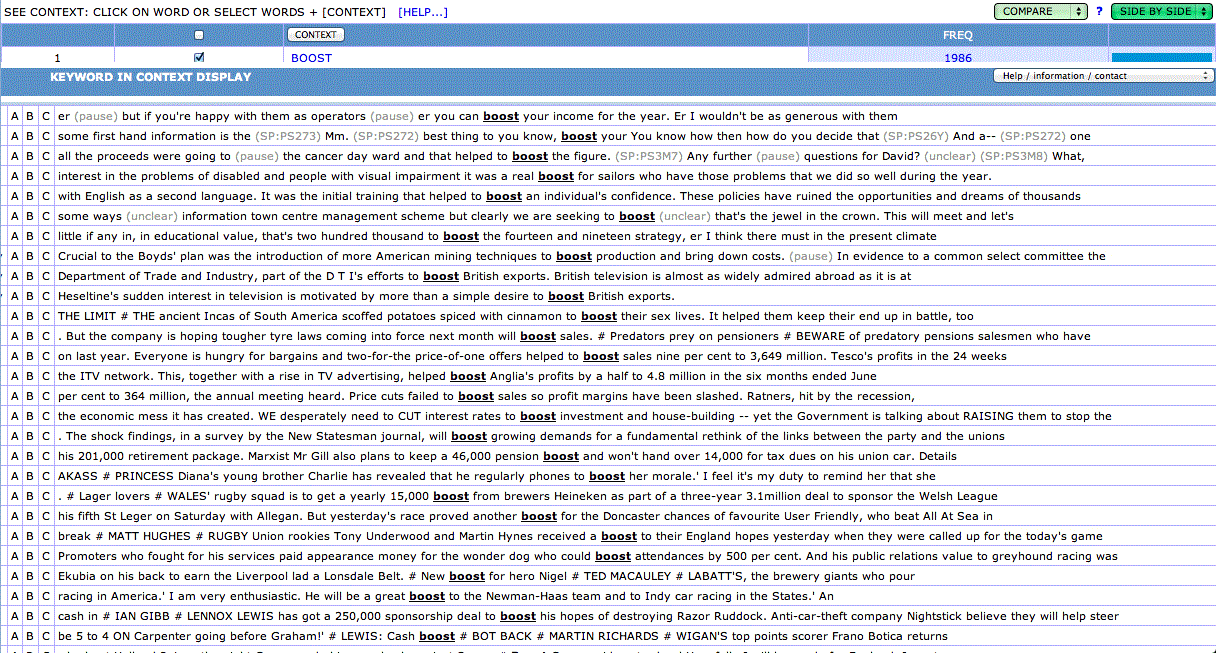
Looking at some of the example sentences above, could you tell if ‘boost’ is usually used as a noun? A verb? An adjective? Or an adverb?
The presence of the modals ‘can boost’ and ‘will boost’ suggest that ‘boost’ can be used as a verb.
The articles ‘a boost’ in ‘a real boost’ and ‘received a boost’ suggest that ‘boost’ can also be used as a noun.
What grammatical patterns can you notice about the use of ‘boost’ as a verb?
Does the object noun come straight after the verb ‘boost’ or is a dependent preposition needed?
From the examples ‘to boost the figures’, ‘to boost an individual’s confidence’ and ‘to boost British exports’, among many others, tell us that the object noun should come straight after the verb ‘boost’, as in
‘to boost + something (object noun)’
How about the use of ‘boost’ as a noun?
What grammatical patterns do you notice?
From the examples ‘a real boost for sailors’ and ‘received a boost to their England hopes’ could suggest the following grammatical patterns:
‘a boost for somebody’
‘to receive a boost to something’
If one explores the example sentences for other examples of ‘boost’ used as a noun, one might find that ‘a boost’ is indeed often followed by the prepositions ‘for’ and ‘to’ before tagging on an object pronoun.
2. Have students notice the genres/registers.
Is the word used more in spoken or written English, in newspapers, fiction, or academic writing, etc?
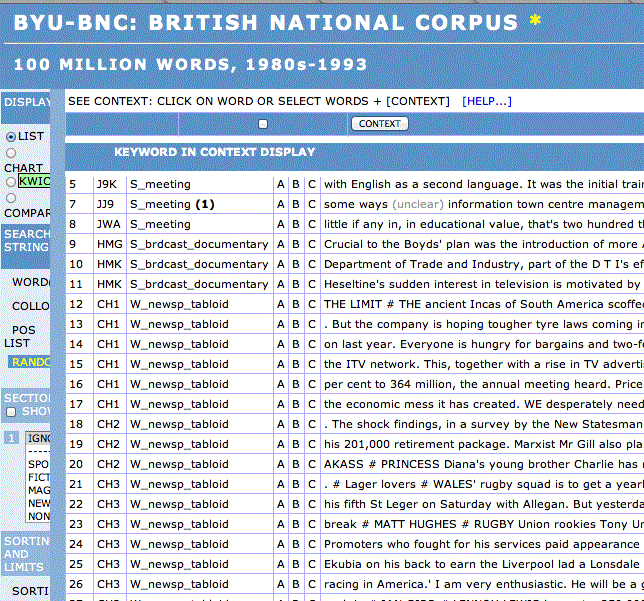
In the case of ‘boost’, one might find that the majority of example sentences come from newspaper and tabloid, followed by those from academic writing in the fields of law, politics and education. This alone could inform us as to when and where one might come across the word ‘boost’.
3. Have students ‘chunk’ the phrases and collocations.
We know that words don’t exist on their own, and that their meanings often depend on the surrounding words that accompany it.
But where does a phrase start and end? Getting students to practise ‘chunking’ a text can not only help them understand the lexis used, but also enable them to identify patterns of usage. Let’s try to identify some of the chunks with the word ‘get’.
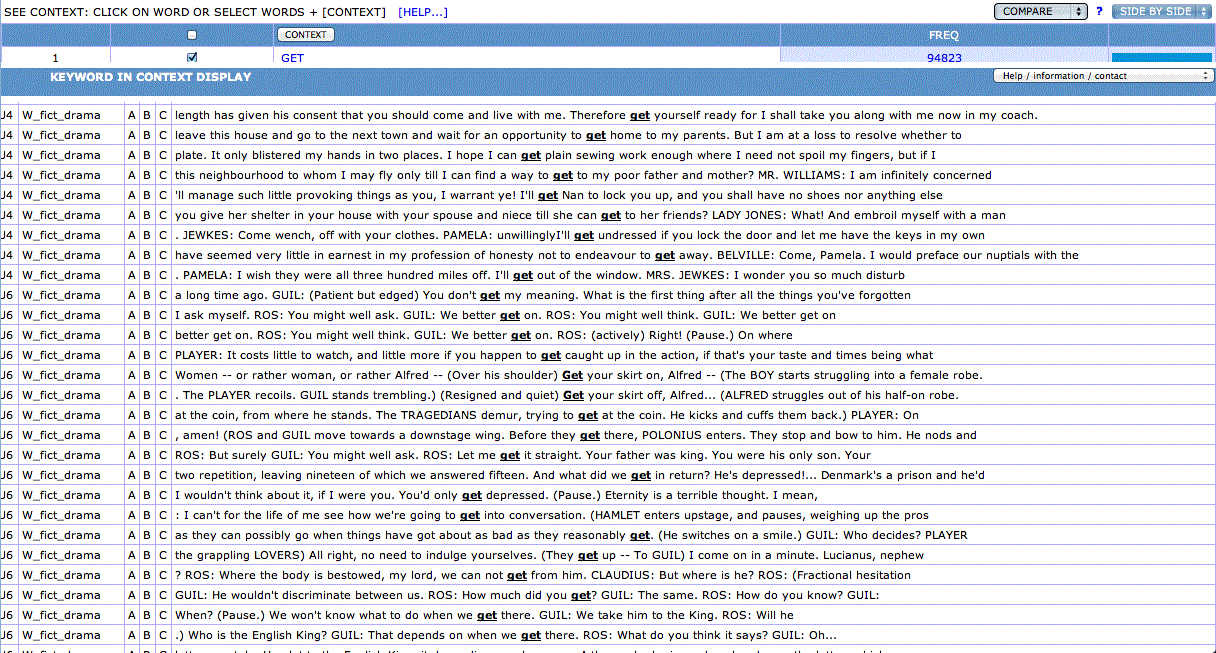
Did you find ‘get ready’, ‘get someone to do something’, ‘get my meaning’, ‘to find a way to get to someone’, ‘get undressed’, ‘Let me get it straight’, and ‘get depressed’, among many others?
4. Have students categorise the different meanings of a word (hyponyms).
Can you categorise the word ‘get’ in the example sentences into its different meanings?
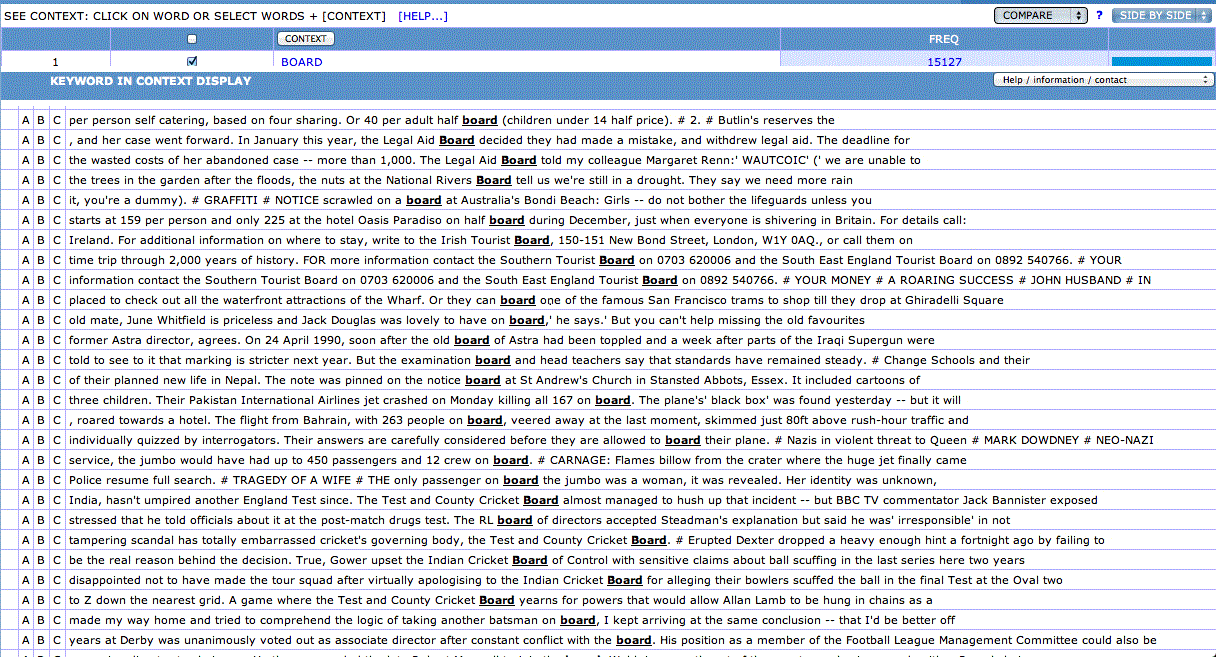
How about categorising the different meanings of ‘board’ that you can find in the above examples?
Perhaps one category could have something to do with transport, e.g. ‘they can board of the famous San Francisco trams’, ‘the jumbo would have had up to 450 passengers and 12 crew on board’, ‘…before they are allowed to board their plane’, etc.
Another category uses board to mean ‘a flat piece of wood’ such as ‘…scrawled on a board’ and ‘…pinned on the notice board’.
Yet another category is concerned with food/meals, as in ’40 per adult half board’.
But one of the most common use of ‘board’ among these example sentences seem to be one with the meaning of ‘a group of people either administering a company/organisation or on a committee/council’, e.g. ‘the Legal Aid Board’, ‘the Irish Tourist Board’, ‘the examination board’, etc.
5. Have students compare two near-synonyms
My learners often come to me with questions like “What’s the difference between ‘listen’ and ‘hear’?” and “What’s the difference between ‘trouble’ and ‘problem’?”
I would sometimes be able to give a satisfactory answer because I have either read up on these differences in a teacher’s book or blogpost, or have come across this question before in my teaching career and have thought extensively about the answer.
But there are often no hard and fast rules to language, especially when it comes to lexis, and I could not always vouch for the validity of my answers (or those from a teacher’s book, for that matter).
Furthermore, by taking on the responsibility as ‘knowledge giver’, I seem to be robbing my learners of a chance to discover the answers for themselves.
Using the corpus, I’m able to pull up example sentences of words that my learners have problems with, and allow them to compare and contrast the near-synonyms for themselves.
Here’s a real-life example that I experienced in my language classroom.
A group of advanced students wanted to know the difference between the words ‘squeamish’ and ‘queasy’. Admittedly, they were not words that you would find in a English teacher’s handbook, nor ones that you get asked about by most students.
Pulling up example sentences of ‘squeamish’,
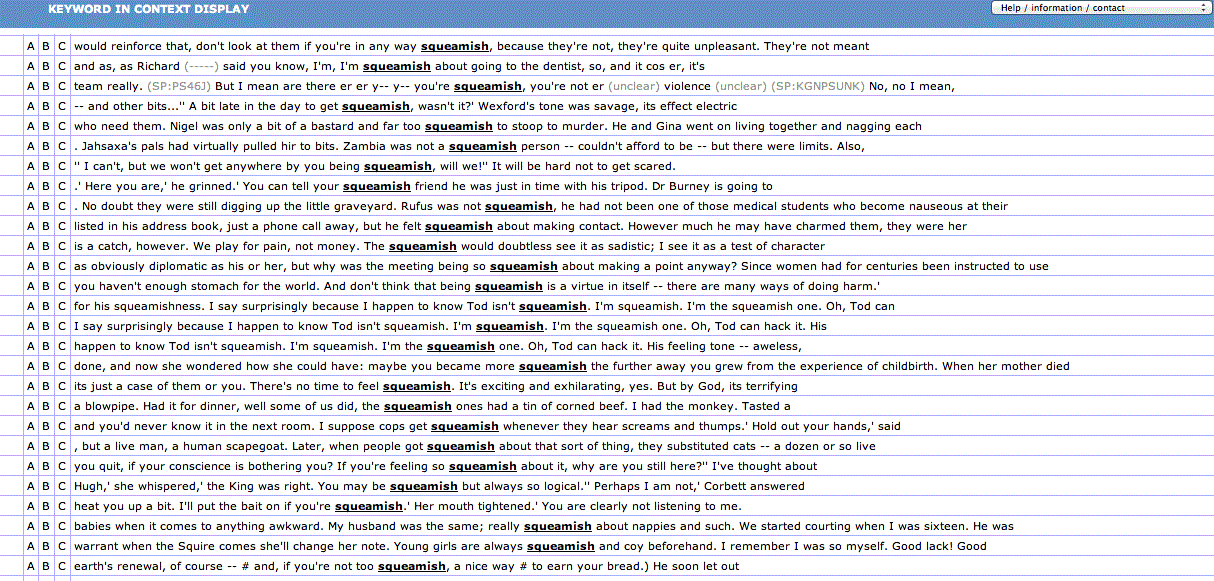
and example sentences of ‘queasy’,
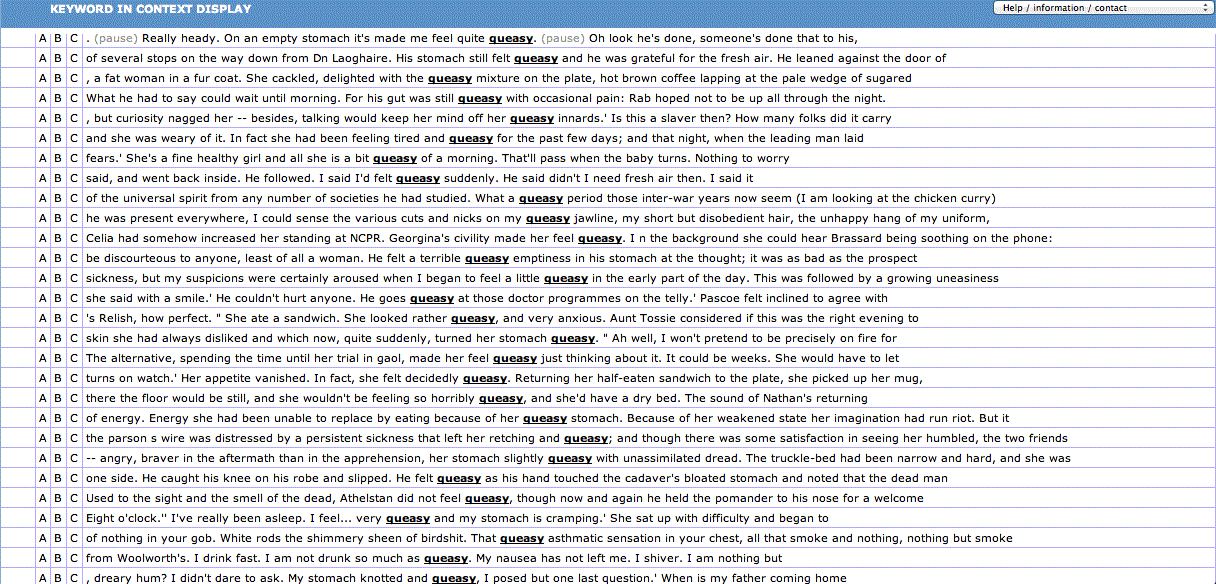
we proceeded to compare the two.
We also looked at the most frequent collocates of ‘squeamish’,
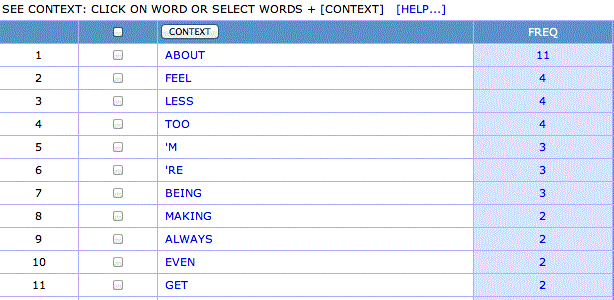
and the most frequent collocates of ‘queasy’.
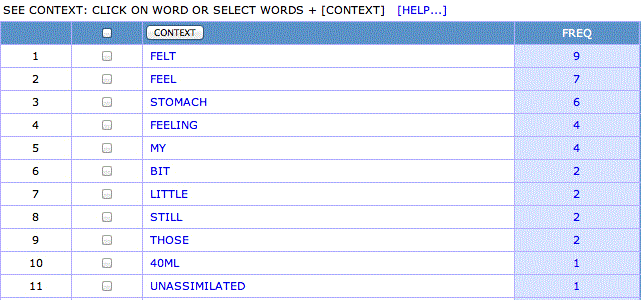
What do you notice about the words ‘squeamish’ and ‘queasy’?
My students decided that ‘squeamish’ was used more to describe someone’s personality, the way someone is usually, e.g. ‘He is squeamish about going to the dentist’.
‘Queasy’ seems to be more often used as a temporary feeling of discomfort in the stomach often due to a trigger, e.g. ‘He felt queasy when he saw the blood on the operating table’.
Are those the same conclusions that you came to?
The BYU-BNC corpus that this blogpost is based on is of course by no means the only FOC corpus around.
Just The Word is another easy-to-use site that allows teachers and learners alike to analyse and explore the many facets of words.
Speaking extensively on the use of corpus, both for Business English teaching and training, and for ELT materials development, Evan Frendo has several helpful tips and advice on the use of corpora in his talks and in his slides which he makes readily available on his website.
For those interested in how English is used by Non-Native expert users, the VOICE corpus offers an alternative that could help elucidate how English is being used as a lingua franca, which could perhaps be of more relevance to our learners.
About English Teaching professional’s regular blogger:
Chia Suan Chong is a General English and Business English teacher and teacher trainer, with a degree in Communication Studies (Broadcast and Electronic Media) and an MA in Applied Linguistics and English Language Teaching from King’s College London.
A self-confessed conference addict, she spends a lot of her time tweeting (@chiasuan/@ETprofessional), Skyping, and writing. You can find out more about her on her blogsite: http://chiasuanchong.com


Comments
Write a Comment
Comment Submitted